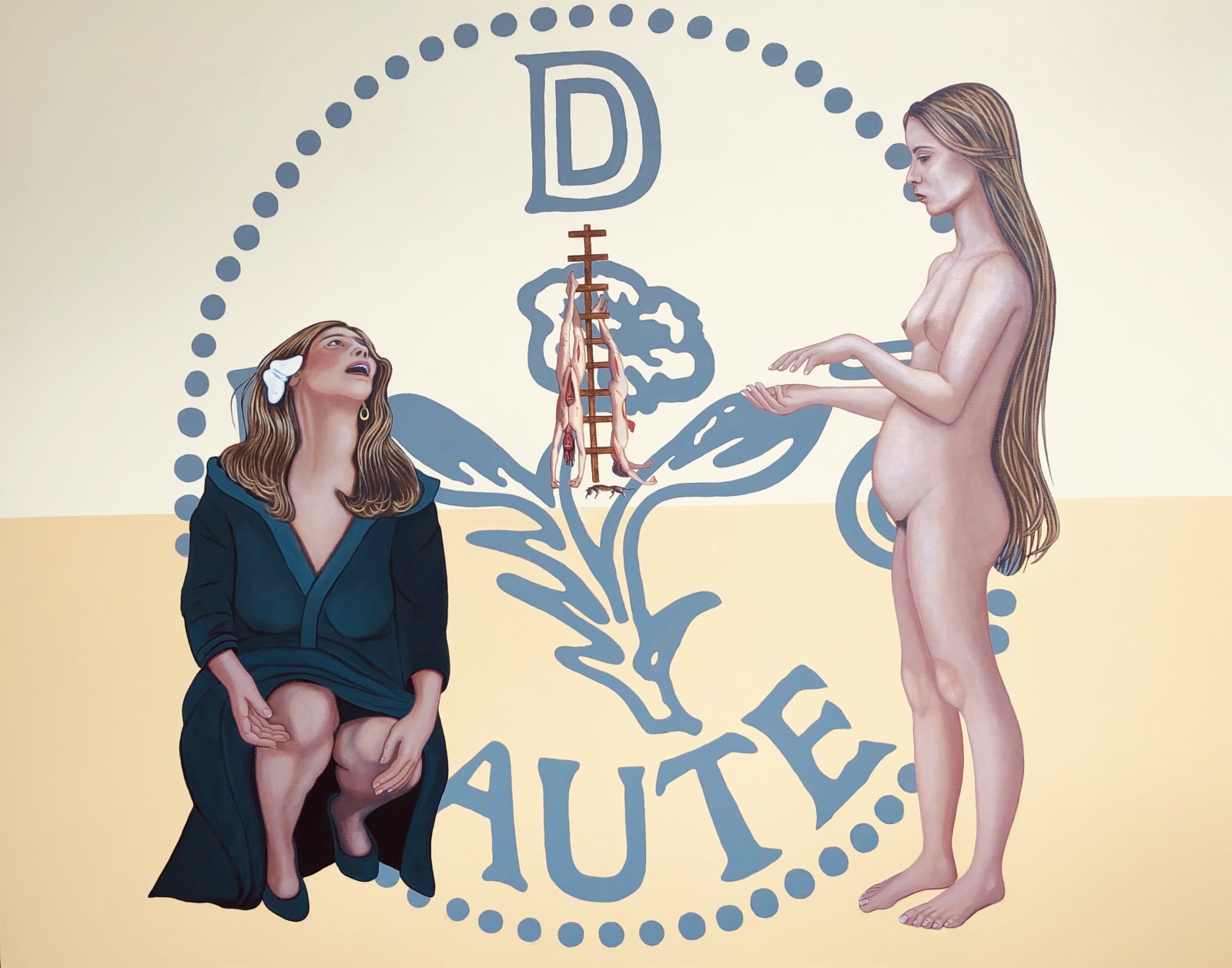Cristina Ruiz Guiñazú
'Ultimi Barbarorum', 2019
Acrylic on canvas
130 x 160 cm
Signed and dated
'Ultimi Barbarorum'
My painting is reminiscent of this tragic event, the darkest moment in Dutch history during the Golden Age, and so important in the life and thought of Spinoza.
Spinoza had long known that his and his friends' freedom to philosophise was due to the unique climate of political and religious tolerance the brothers De Witt had created in the Netherlands. Known to be calm, the occasion of the murders was the only time we know of when Spinoza got really angry. Gottfried Wilhelm von Leibniz, the German philosopher came to visit 4 years after the murders. He wrote: "I have spent several hours with Spinoza, after dinner. He said to me that, on the day of the massacres of the De Witts, he wanted to go out at night and post a placard near the site of the massacres reading ultimi barbarorum. But his host locked the house to keep him from going out, for he would be exposed to being torn to pieces."
My painting is reminiscent of this tragic event, the darkest moment in Dutch history during the Golden Age, and so important in the life and thought of Spinoza.
Spinoza had long known that his and his friends' freedom to philosophise was due to the unique climate of political and religious tolerance the brothers De Witt had created in the Netherlands. Known to be calm, the occasion of the murders was the only time we know of when Spinoza got really angry. Gottfried Wilhelm von Leibniz, the German philosopher came to visit 4 years after the murders. He wrote: "I have spent several hours with Spinoza, after dinner. He said to me that, on the day of the massacres of the De Witts, he wanted to go out at night and post a placard near the site of the massacres reading ultimi barbarorum. But his host locked the house to keep him from going out, for he would be exposed to being torn to pieces."
'Ultimi Barbarorum'
My painting is reminiscent of this tragic event, the darkest moment in Dutch history during the Golden Age, and so important in the life and thought of Spinoza.
Spinoza had long known that his and his friends' freedom to philosophise was due to the unique climate of political and religious tolerance the brothers De Witt had created in the Netherlands. Known to be calm, the occasion of the murders was the only time we know of when Spinoza got really angry. Gottfried Wilhelm von Leibniz, the German philosopher came to visit 4 years after the murders. He wrote: "I have spent several hours with Spinoza, after dinner. He said to me that, on the day of the massacres of the De Witts, he wanted to go out at night and post a placard near the site of the massacres reading ultimi barbarorum. But his host locked the house to keep him from going out, for he would be exposed to being torn to pieces."
My painting is reminiscent of this tragic event, the darkest moment in Dutch history during the Golden Age, and so important in the life and thought of Spinoza.
Spinoza had long known that his and his friends' freedom to philosophise was due to the unique climate of political and religious tolerance the brothers De Witt had created in the Netherlands. Known to be calm, the occasion of the murders was the only time we know of when Spinoza got really angry. Gottfried Wilhelm von Leibniz, the German philosopher came to visit 4 years after the murders. He wrote: "I have spent several hours with Spinoza, after dinner. He said to me that, on the day of the massacres of the De Witts, he wanted to go out at night and post a placard near the site of the massacres reading ultimi barbarorum. But his host locked the house to keep him from going out, for he would be exposed to being torn to pieces."
Join Us ! You are invited
Sign up to our mailing list to recieve updates about new exhibitions, fairs, films, talks and special collectors events.

